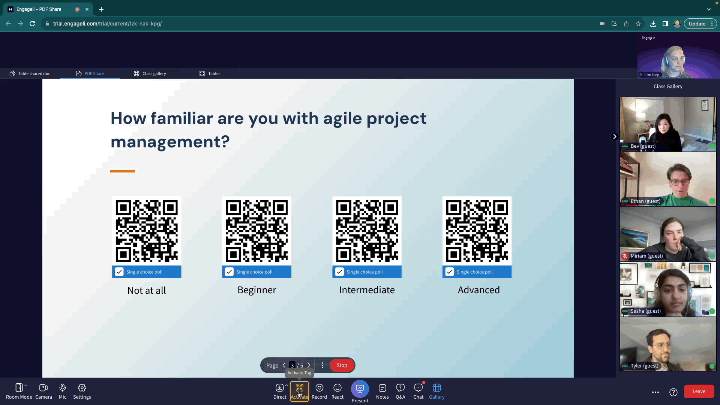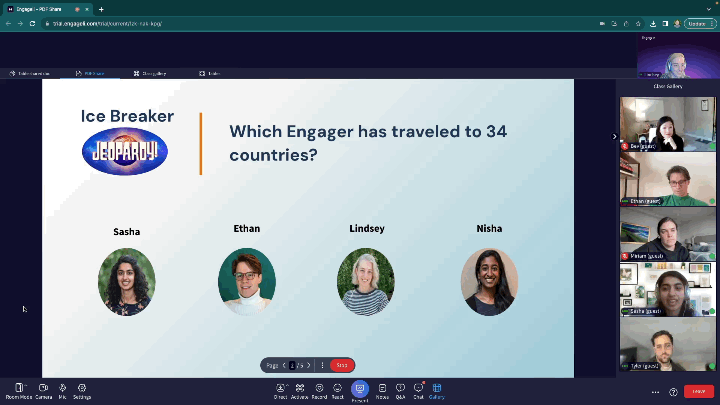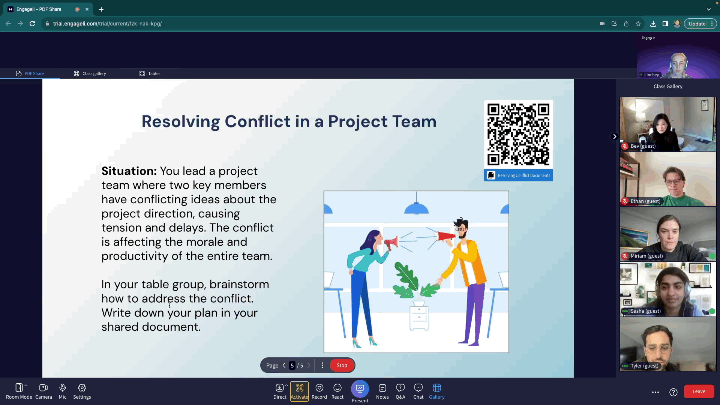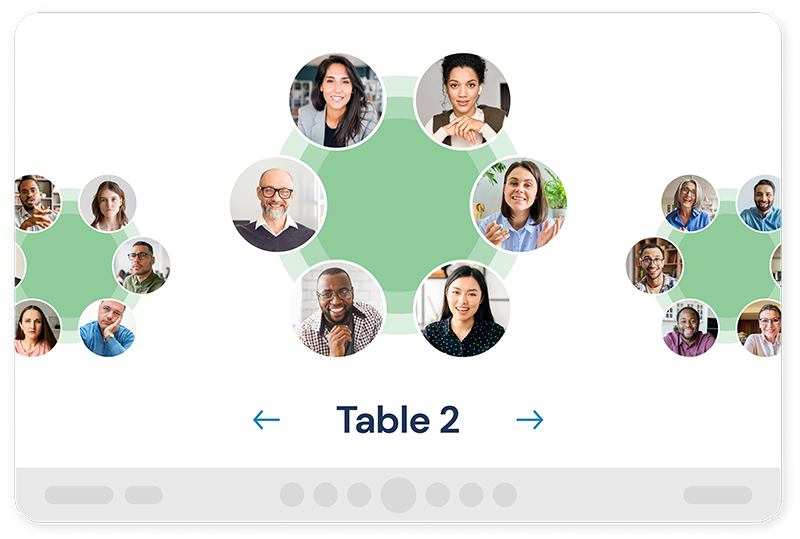Imagine an online classroom that feels as dynamic and interactive as a physical one. With Engageli's tables, collaboration and engagement between online learners is simple.
In this article, we'll explore four use cases that show how Engageli makes small-group learning seamless. Let's see how Engageli is bringing people together, one virtual table at a time!
Small-Group Learning with Patented Tables
Engageli’s table architecture brings a human touch to online learning. It mirrors the dynamics of a physical classroom by allowing small groups to collaborate while still being connected to the facilitator. Unlike isolated breakout rooms found in traditional video conferencing tools, Engageli offers a more integrated and seamless collaborative setting.
Use Case 1: Peer-to-Peer Learning in Sales Training
A sales manager at a large tech company is conducting a training session on best sales practices at each stage of the customer journey for new employees. He sets up several Engageli tables, each labeled with a stage of the customer journey like consideration, purchase, and retention.
Employees join the tables that align with their current challenges. In their small groups, they discuss best practices for sales conversations and practical ways they can implement the strategies in their work. The manager easily moves between tables, providing insights and answering questions. After 10 minutes, the employees all pick a new table and discuss with a new group of peers.
Engageli’s table feature allows team members to focus on relevant discussions and apply their learning directly to their work, fostering practical understanding and immediate application.

Use Case 2: Grouping Learners by Poll Responses
During a new hire onboarding, employees are asked to indicate their familiarity with Agile methodologies so they can receive the appropriate training. Instead of having to collect this information beforehand, the trainer runs a poll during the Engageli session, and the participants are automatically grouped into tables based on their familiarity.
This poll split enables like-minded groups to be formed so participants can learn at their level. Individual facilitators can join each table to conduct the session, or each table can be assigned different activities and documents to ensure they are learning at the right skill level.
Later in the session, the trainer wants to group the new employees by diverse responses. With a quick adjustment of the settings, she groups the participants into tables of mixed poll responses. This approach not only encourages knowledge sharing across different expertise levels but also sparks new discussions, enriching the overall onboarding experience.

Use Case 3: Company-Wide Team Building
During a company holiday party, the HR team wants to encourage engagement and socializing between employees across teams without having an awkward open happy hour. To achieve this, the HR leader decides to use Engageli’s tables to run a Jeopardy-style game.
The employees are randomly assigned to Engageli tables to form the Jeopardy teams. As the trivia questions are asked on screen, one person from each table quickly raises their hand (almost like a buzzer) to come to the front of the room and answer the question. Their colleagues at their table help by feeding them answers while they are up at the podium.
Unlike traditional breakout rooms, Engageli’s tables allow group members to stay connected to each other and the larger class at all times, fostering inclusive and enjoyable team building.

Use Case 4: Collaborative Group Work
In an online MBA program, the leadership class professor is worried about not having enough opportunities for students to discuss and work directly with their peers. A lot of content in the leadership class is about communicating with teammates and building competencies around relationship-building. Without hands-on collaboration, the learners will not be able to directly apply what they are learning.
With Engageli’s tables, the professor assigns collaborative documents to each small group at their table. This allows her students to discuss and learn as they work together to outline their approach to a common leadership scenario. Instead of having to open up new tabs to use shared documents or sticky notes, the 'Distribute Docs' feature in Engageli enables learners to stay focused on their tablemates as they complete the activity.

![]() Interested in experiencing Engageli's new features firsthand?
Interested in experiencing Engageli's new features firsthand?
Try our new immersive experience to explore the Engageli platform!

